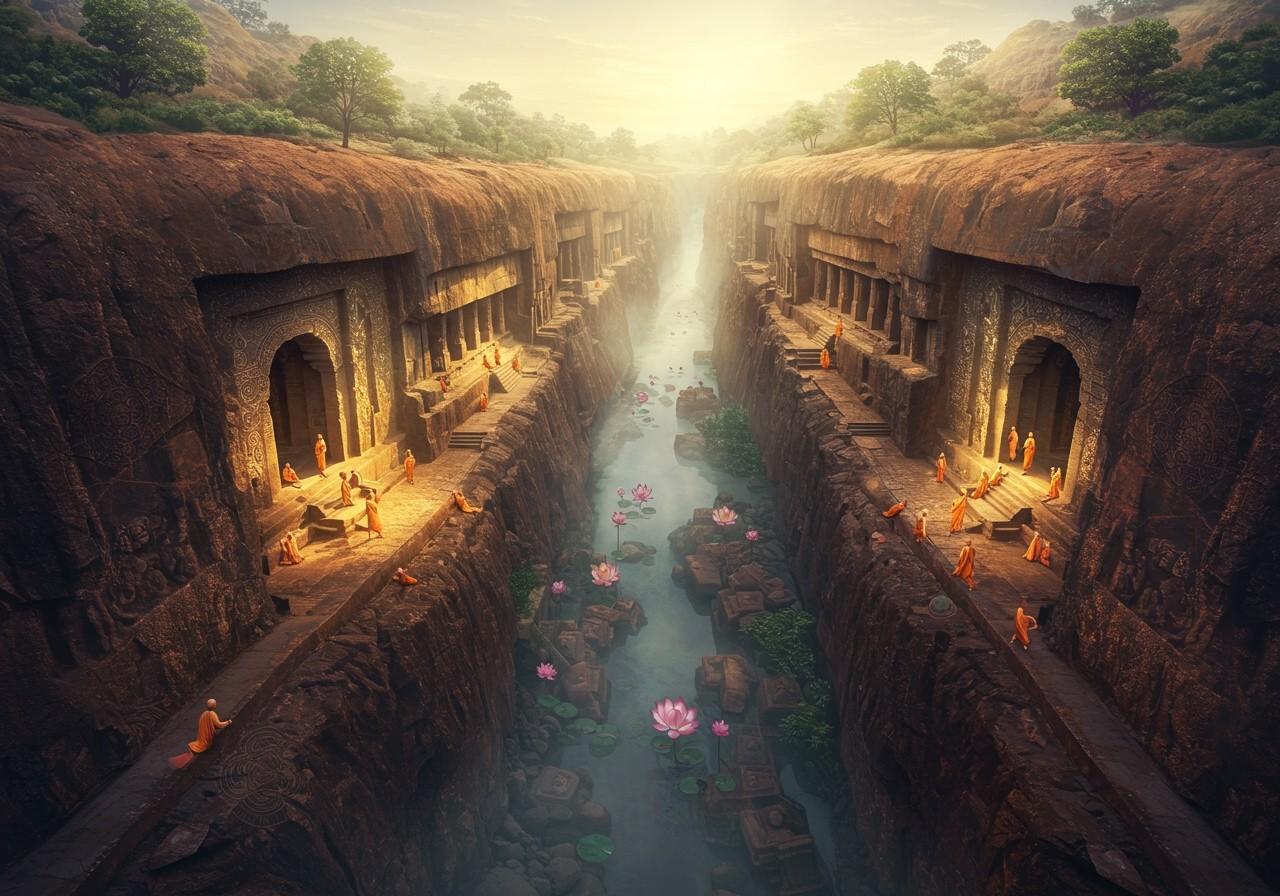
The Barabar and Nagarjuni Caves stand as testaments to India’s rich history and architectural prowess. Located in Bihar, these ancient rock-cut caves offer a unique glimpse into the past. This article delves into a comparative analysis of the Barabar and Nagarjuni Caves, exploring their locations, historical context, architectural styles, and significance.
Historical Context
Dating back to the Maurya Empire (322-185 BCE), the Barabar Caves hold the distinction of being among the oldest surviving rock-cut caves in India. Commissioned by Emperor Ashoka, these caves served as sanctuaries for the Ajivikas, a religious sect contemporary with early Buddhism and Jainism. The nearby Nagarjuni Caves, similarly carved out of rock, were completed by Ashoka’s grandson, Dasaratha Maurya, also for the Ajivikas.
Inscriptions found within the caves provide invaluable insights into the religious and cultural practices of the time, shedding light on the beliefs and daily lives of those who utilized these spaces. The Ajivika sect’s influence is evident in the architecture and design of these caves, making them an important subject of study for historians and archaeologists.
Location and Accessibility
The Barabar Caves are situated in the Jehanabad district of Bihar, approximately 24 kilometers north of Gaya. The Nagarjuni Caves are conveniently located about 2 kilometers from the Barabar Caves, allowing visitors to easily explore both sites. Accessible by road from major cities like Patna and Gaya, the caves are nestled amidst natural beauty. The ideal time to visit is during the cooler months, offering pleasant weather and a less crowded experience.
Architectural Style and Features
Renowned for their remarkably polished interiors, a testament to advanced techniques of the era, the Barabar Caves are primarily carved from granite. These caves typically feature simple rectangular chambers with rounded roofs. Some notable caves include:
- Lomas Rishi Cave: Distinguished by its elaborate entrance facade, this cave is a prime example of Mauryan rock-cut architecture. Its unique curved roof and detailed carvings set it apart.
- Sudama Cave: This cave bears an inscription from Emperor Ashoka himself, adding to its historical significance. The inscription provides valuable details about the cave’s dedication and purpose.
The Nagarjuni Caves, while sharing similarities with the Barabar Caves, exhibit slight variations in design and construction techniques. Both cave complexes showcase unique architectural features, highlighting both differences and similarities in Mauryan-era craftsmanship. The highly polished interiors, achieved through sophisticated methods, are a remarkable feat of ancient engineering.
Serving as monastic retreats for Ajivika monks, these caves provided spaces for meditation and spiritual practices. Their design reflects the Ajivikas’ ascetic lifestyle and emphasis on contemplation.
Religious and Cultural Significance
Both the Barabar and Nagarjuni Caves hold profound religious and cultural significance. Utilized by the Ajivika sect for meditation and spiritual practices, these caves offer insights into the sect’s beliefs and rituals. The Ajivikas’ philosophy, distinct from Buddhism and Jainism, adds another layer of complexity to India’s rich religious landscape.
Shop for Pooja Essentials at Poojn.in
Enhance your spiritual practice with authentic pooja items from Poojn.in. We offer a wide range of products, from incense sticks and diyas to idols and more. Create a sacred space in your home with our high-quality offerings.
- Shiva Lingam: Perfect for your home altar.
- Tulsi Mala: Enhance your meditation practice.
- Pooja Asan: Create a comfortable space for your rituals.
Visit Poojn.in today to explore our complete collection.
Conclusion
The Barabar and Nagarjuni Caves offer a captivating journey into ancient Indian history and architecture. These caves, with their historical significance, architectural brilliance, and religious importance, provide a fascinating glimpse into the Mauryan period and the Ajivika sect. Their close proximity and accessibility make them a must-visit for anyone interested in exploring India’s rich cultural heritage. Whether a history enthusiast, spiritual seeker, or simply a curious traveler, the Barabar and Nagarjuni Caves promise an enriching and memorable experience.
Explore related articles on Poojn.in:
- Parshuram Temples: Goa and Kerala
- Rajasthan’s Parshuram Temples
- Sun Temple, Modhera: Your Complete Guide


